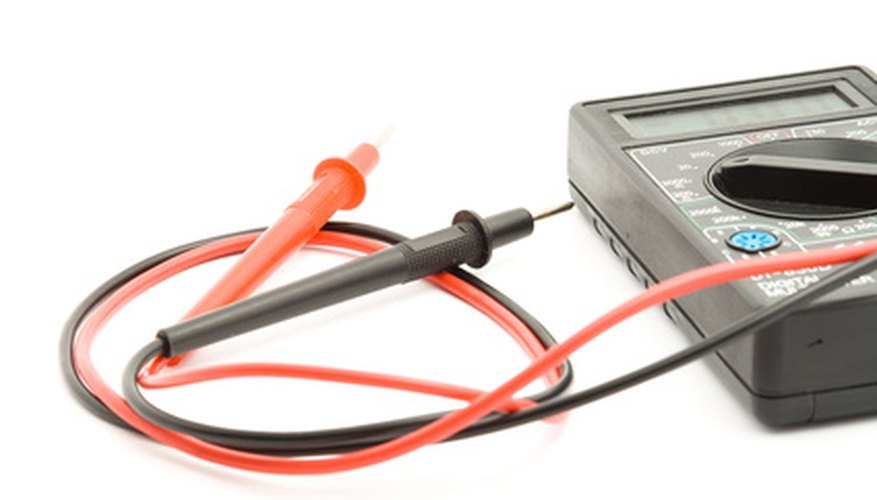Bosch voltage regulators control the amount of voltage supplied by your vehicle's alternator to the battery and other electrical equipment. A vehicle's electrical system generally operates on 12 volts -- too much voltage and the fuses blow. As the speed of your engine increases, so does the amount of voltage the alternator produces. Once it produces about 13 or 14 volts, your Bosch voltage regulator monitors the voltage to maintain a constant voltage. The regulator is set to allow slightly higher voltage than your electrical equipment to allow for resistance in the wiring. You can test your Bosch voltage regulator by using a multimeter.
- Bosch voltage regulators control the amount of voltage supplied by your vehicle's alternator to the battery and other electrical equipment.
- The regulator is set to allow slightly higher voltage than your electrical equipment to allow for resistance in the wiring.
Raise your vehicle's bonnet and prop it open. Turn on the engine and let it idle. The engine must be running to test the voltage regulator. You don't need to access the regulator, just the battery terminals. Do not disconnect any wires during the test, as this can result in a voltage overload that will damage your electrical equipment.
Set the multimeter to measure voltage. Place the metal tip on the end of the multimeter's red wire on the positive ("+") battery terminal. Place the metal tip on the end of the multimeter's black wire on the negative ("-") battery terminal. Your Bosch voltage regulator provides an electrical charge to your battery. Placing the wires on the two terminals completes a circuit, and the meter measures the voltage flow.
- Set the multimeter to measure voltage.
- Place the metal tip on the end of the multimeter's red wire on the positive ("+") battery terminal.
Check the multimeter display panel. It should read 12 volts, maybe very slightly less. This is because your engine is at idle speed, which isn't fast enough for the alternator to produce more than 12 volts. However, a charged battery produces 12 volts, so effectively the multimeter is measuring the output from the battery, not the voltage from the regulator. If it's much less than 12 volts, it means that your battery isn't fully charged.
Get a helper to sit in your vehicle and increase the engine speed to 1,500rpm. The alternator now produces more than 12 volts, so your Bosch regulator kicks in to regulate the flow.
Read the multimeter display panel again. It should read between 13 and 14 volts if the Bosch regulator is operating correctly. If it reads higher than 14 volts, you need to get the regulator checked, as it could blow fuses in your car or damage electrical equipment. If it's less than 13 volts, it may be that your alternator isn't producing enough electricity.
- Get a helper to sit in your vehicle and increase the engine speed to 1,500rpm.
- If it reads higher than 14 volts, you need to get the regulator checked, as it could blow fuses in your car or damage electrical equipment.
Get your helper to increase the engine speed to 2,500rpm. This is the final test to ensure that your Bosch voltage regulator is operating correctly. The alternator is now producing far more than 12 volts, but the reading on the multimeter shouldn't increase.
Read the multimeter display. If it reads 13 to 14 volts, your Bosch regulator is doing its job. If the reading increases above 14 volts, get the regulator checked. If the reading is less than 13 volts, it could be the alternator or the regulator that are not working correctly, so get them both checked out.
Remove the multimeter wires from the battery terminals. Turn off your vehicle's engine and close the bonnet.
TIP
It's sensible to wear a pair of protective gloves while testing your Bosch voltage regulator, as you will be near the battery terminals.
WARNING
Make sure you aren't wearing any loose clothing while testing the regulator, as the engine needs to be running.
